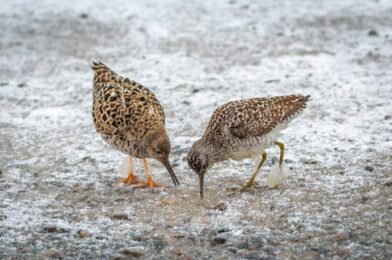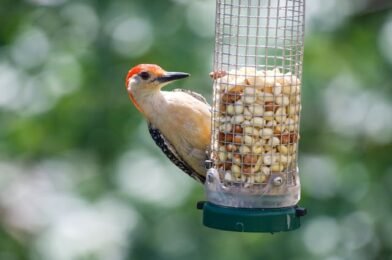Attracting colorful songbirds to your backyard during the winter months can be a delightful and rewarding experience. As the colder weather sets in, many bird species become more reliant on feeders, offering a fantastic opportunity to observe these feathered friends up close. To ensure a vibrant display of winter birds, it’s essential to provide them with the right foods that cater to their dietary needs and preferences. Here are some tips on how to create a bird-friendly buffet that will have your garden buzzing with avian activity.
**Stock up on High-Energy Foods:** Winter is a demanding season for birds, requiring them to maintain body heat and energy levels. Offer foods rich in fats and oils, such as black-oil sunflower seeds, peanuts, and suet. These high-calorie options provide the birds with the energy they need to survive the chilly weather. Sunflower seeds, in particular, are a favorite among many bird species, including chickadees, nuthatches, and finches.
**Don’t Forget the Nectar:** While hummingbirds are often associated with warmer months, some species, like the Anna’s Hummingbird, remain year-round in certain regions. Providing a warm sugar-water solution with a ratio of 1 part sugar to 4 parts water will attract these tiny, colorful birds. Keep the nectar fresh and replace it regularly to prevent freezing and ensure a reliable food source for these energetic visitors.
**Offer a Variety of Seeds:** Different bird species have different dietary preferences. Offering a mix of seeds will cater to a broader range of birds. Consider providing white and red millet, which appeal to sparrows and juncos, as well as safflower seeds, favored by cardinals and grosbeaks. A blend of seeds will create a diverse and colorful gathering of birds, each with their unique charm and beauty.
**Add Some Fruit to the Menu:** Fruits such as oranges, apples, and berries can be a welcome treat for many winter birds. Waxwings, robins, and mockingbirds are particularly fond of fruit. Simply cut the fruit into halves or wedges and place them on a feeder or skewer them onto branches near your viewing area for a colorful and healthy snack option.
By offering a diverse selection of these foods, you’ll create a welcoming environment for a wide range of winter birds. Remember, providing fresh water for drinking and bathing is also essential. With these simple steps, you can transform your yard into a vibrant winter sanctuary for birds, offering both sustenance and a delightful spectacle for you to enjoy.










